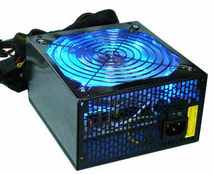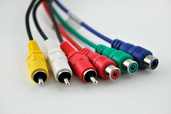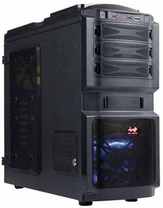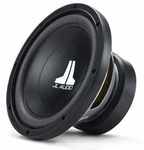 - A power supply is installed in the back corner of the PC Case, next to the motherboard.
- It converts 120vac (Stand House Power) into DC voltages that are used by other components in the PC.
- A 20 conductor cable carries +5vdc, -5vdc +12vdc, -12vdc and ground to the motherboard.
- Another pair of cables, each with four conductors and two 4-pin connectors daisy-chained along it, carry +5vdc, +12vdc and ground to the drives (hard, floppy and CD/DVD).
- Typical PC power supplies are rated at 200-250 watts and sell for about $50-$70. Higher wattage supplies are available.
 - Although these are not the most sophisticated part of the system, they are just as important as any other component.
- All the components in a PC are connected together and to power with wires and cables.
- Ninety percent of all electronics problems (including PC’s) are the result of poor connections.
- If you have a PC problem, it is always a good idea to first check that all the cables on your PC are plugged in and properly seated.
 The PC Case is a thin sheet metal enclosure that houses the motherboard, power supply and various drives (HDD, FDD, CD and DVD) - Cases are offered in two styles, desktop and tower. Today the tower type is predominant. It stands upright and is much taller than it is wide. It is usually placed on the floor next to, or under a desk. The desktop has a pizza box profile and usually sites on the desktop.
- Tower cases are offered in two basic sizes, one that can fit ATX (12” wide) motherboards and one that can accommodate ATX mini (8.5” wide) motherboard. The number of driver bays offered also varies depending on manufacturer.
- The motherboard and power supply mount to the floor at the rear of the case. The drives (hard, floppy and CD/DVD) mount in enclosures called drive bays at the front of the case.
- Cases run from $20 to $70 depending on size (ATX or ATX mini), number of drive bays and the wattage of the power supply.
 - Speakers and headphones are the primary audio output device for a PC.
- Some monitors have speakers built into their sides. Other speakers are free standing.
- Passive speakers plug into and are powered directly from the output signal provided by the ‘speaker out’ port on the sound card.
- Active speakers amplify the sound signal from the sound card using battery or rectified AC house power.
|




 RSS Feed
RSS Feed